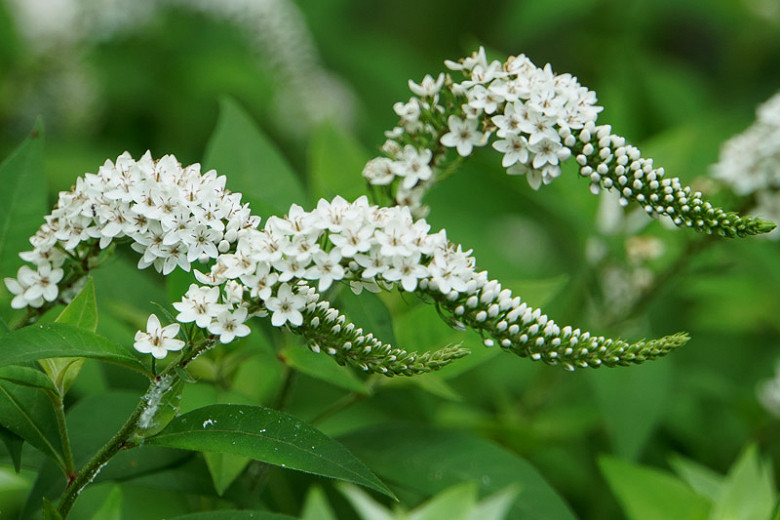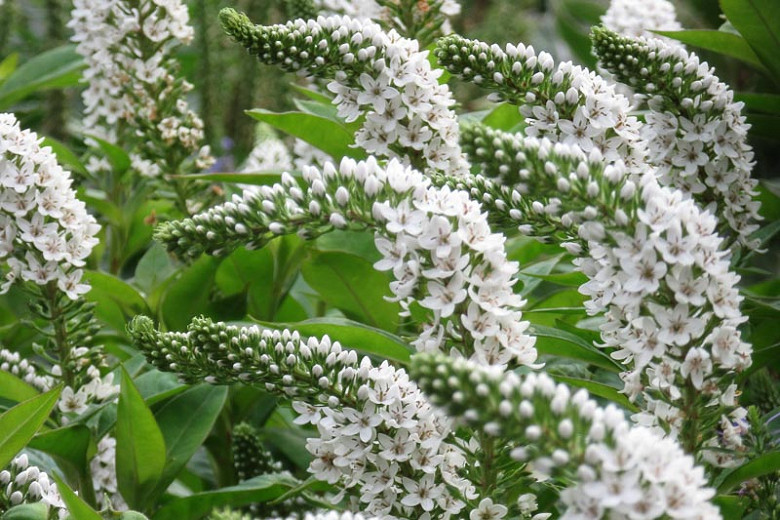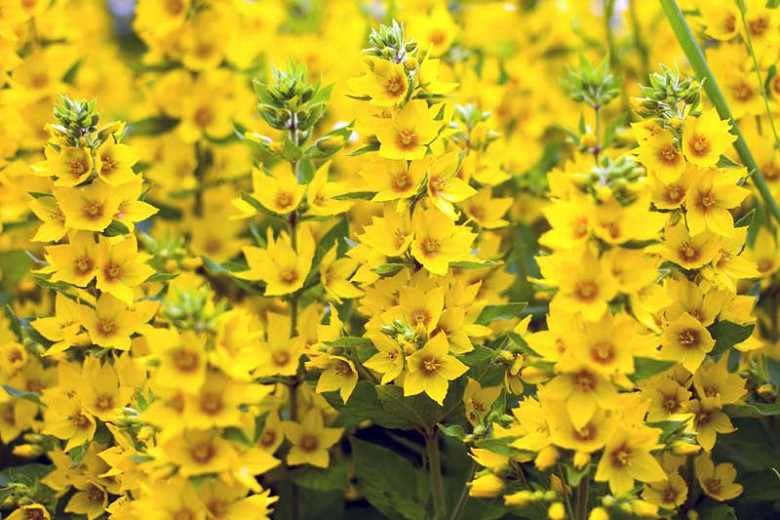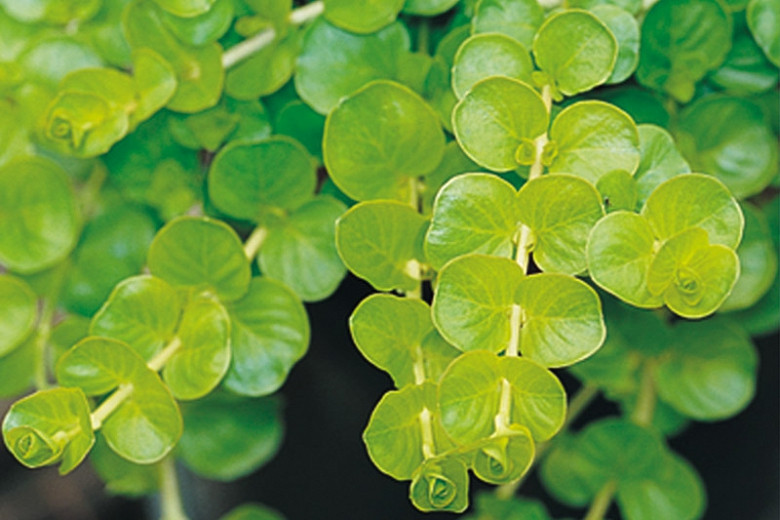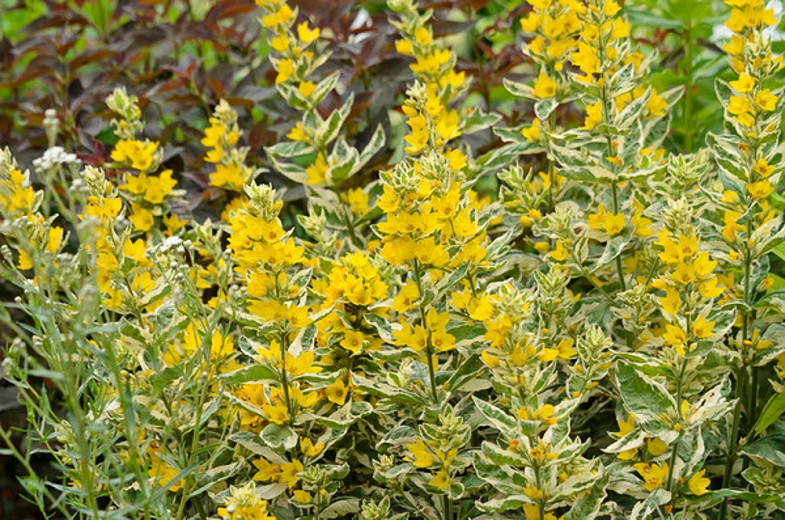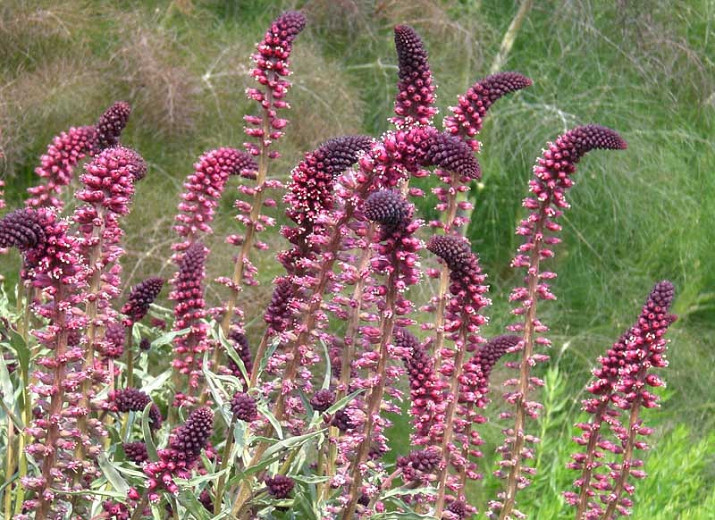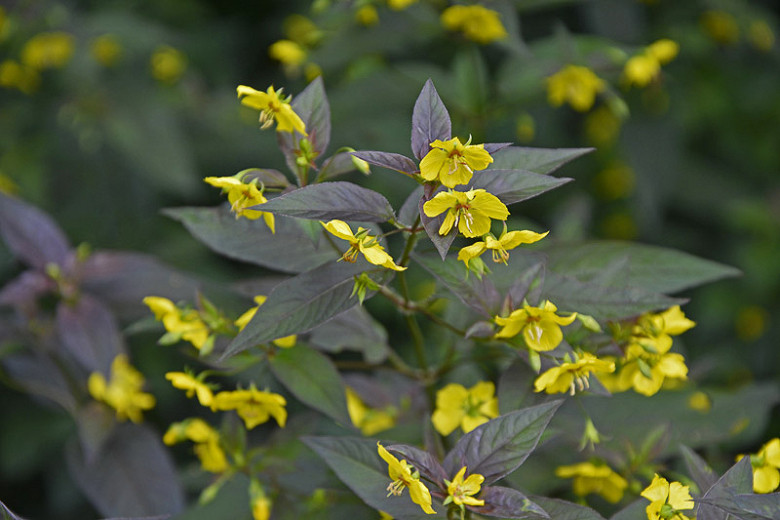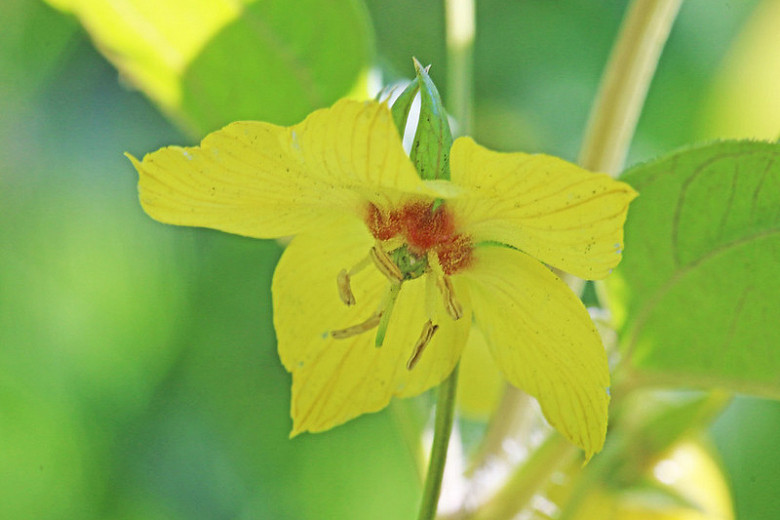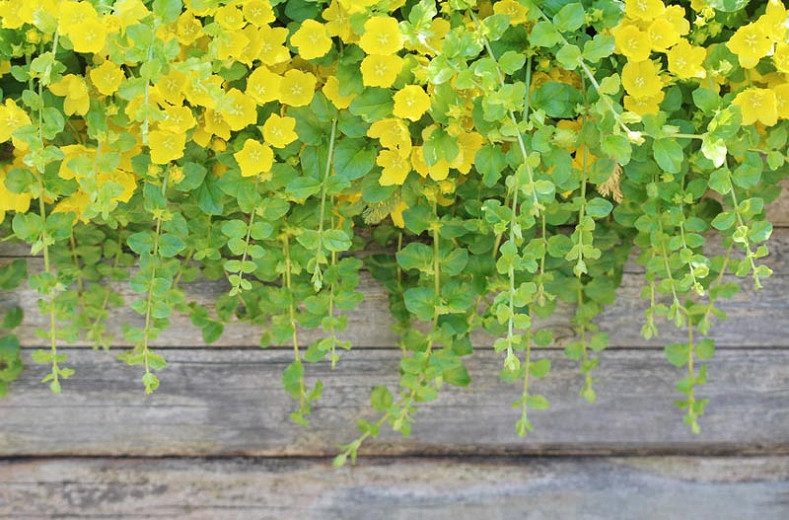Lysimachia clethroides (Gooseneck Loosestrife)
Lysimachia clethroides (Gooseneck Loosestrife) is a vigorous, rhizomatous, clump-forming perennial boasting a profusion of gracefully arching flower spikes, 12-18 in. long (30-45 cm), packed with many tiny, star-shaped white flowers. Resembling a goose's neck, they bloom for weeks in mid to late summer. They are borne above the fine foliage of pointed, slightly pubescent, 3-6 in. long leaves (7-15 cm), which turns orange-red in the fall. Native to Japan and China, this plant spreads aggressively by underground stems to form large colonies. Easy to grow, it is excellent at providing fast-spreading cover when required, creating great visual impact. However, attention should be paid to controlling its spread. Best when massed in a wild garden where it can be allowed to roam freely and naturalize in broad drifts. Prized by florists for fresh cut flower arrangements.
- Recipient of the prestigious Award of Garden Merit of the Royal Horticultural Society.
- Grows 2-3 ft. tall (60-90 cm) and 2-4 ft. wide (60-120 cm).
- Performs best in full sun or part shade, in humus-rich, moist soils. Will spread aggressively by underground rhizomes to form large colonies. However, it will spread more slowly if grown in drier soils with light shade.
- A perfect plant for cottage gardens, wild gardens, bog gardens or next to ponds and streams. Excellent as long-lasting cut flowers.
- Gooseneck Loosestrife is generally not subject to serious pest or disease issues.
- Cut back after flowering.
- Propagate by seed in pots outdoors spring or propagate by division in spring or autumn.
- Native to Japan and China.
- There are up to 180 species of Lysimachia. The genus includes hardy to frost-tender perennials, either herbaceous or evergreen. Their habit can be upright or prostrate, with some forming excellent ground covers. Their flowers are variably shaped, are usually yellow or white, but sometimes pink or purple. Many species are invasive, but this tendency can be harnessed to produce large stands, creating greater visual impact.
Requirements
| Hardiness | 4 – 9 |
|---|---|
| Heat Zones | 1 – 9 |
| Climate Zones | 1, 1A, 1B, 2, 2A, 2B, 3, 3A, 3B, 4, 5, 6, 7, 8, 9, 14, 15, 16, 17, 18, 19, 20, 21, 22, 23, 24, A2, A3 |
| Plant Type | Perennials |
| Plant Family | Lysimachia – Loosestrife |
| Exposure | Full Sun, Partial Sun |
| Season of Interest | Summer (Mid,Late)Fall |
| Height | 2' – 3' (60cm – 90cm) |
| Spread | 2' – 4' (60cm – 120cm) |
| Spacing | 48″ (120cm) |
| Water Needs | Average |
| Maintenance | Low, Average |
| Soil Type | Chalk, Clay, Loam, Sand |
| Soil pH | Acid, Alkaline, Neutral |
| Soil Drainage | Moist but Well-Drained, Moisture Retentive, Poorly Drained |
| Characteristics | Cut Flowers, Plant of Merit, Showy |
| Tolerance | Deer, Rabbit, Wet Soil |
| Garden Uses | Bog Gardens, Ground Covers, Ponds and Streams |
| Garden Styles | Informal and Cottage, Prairie and Meadow |
